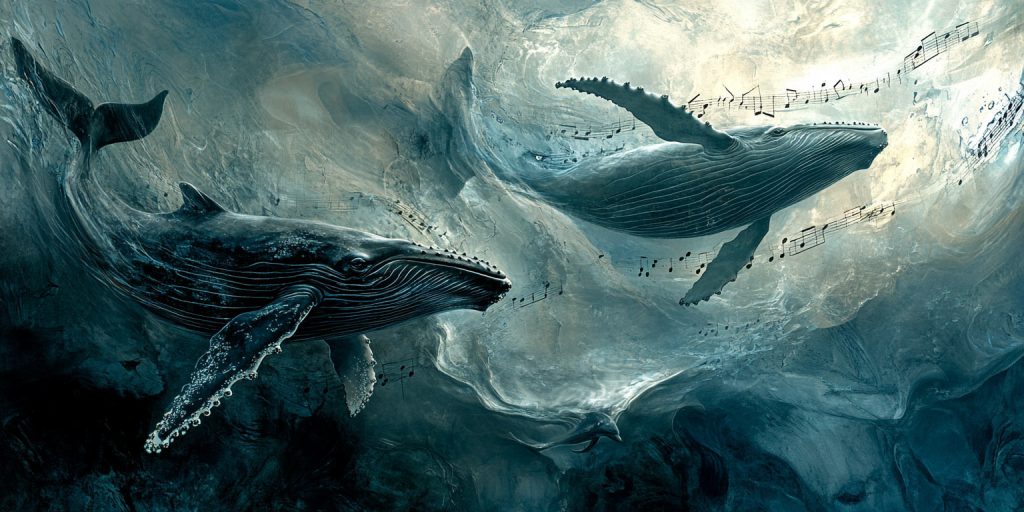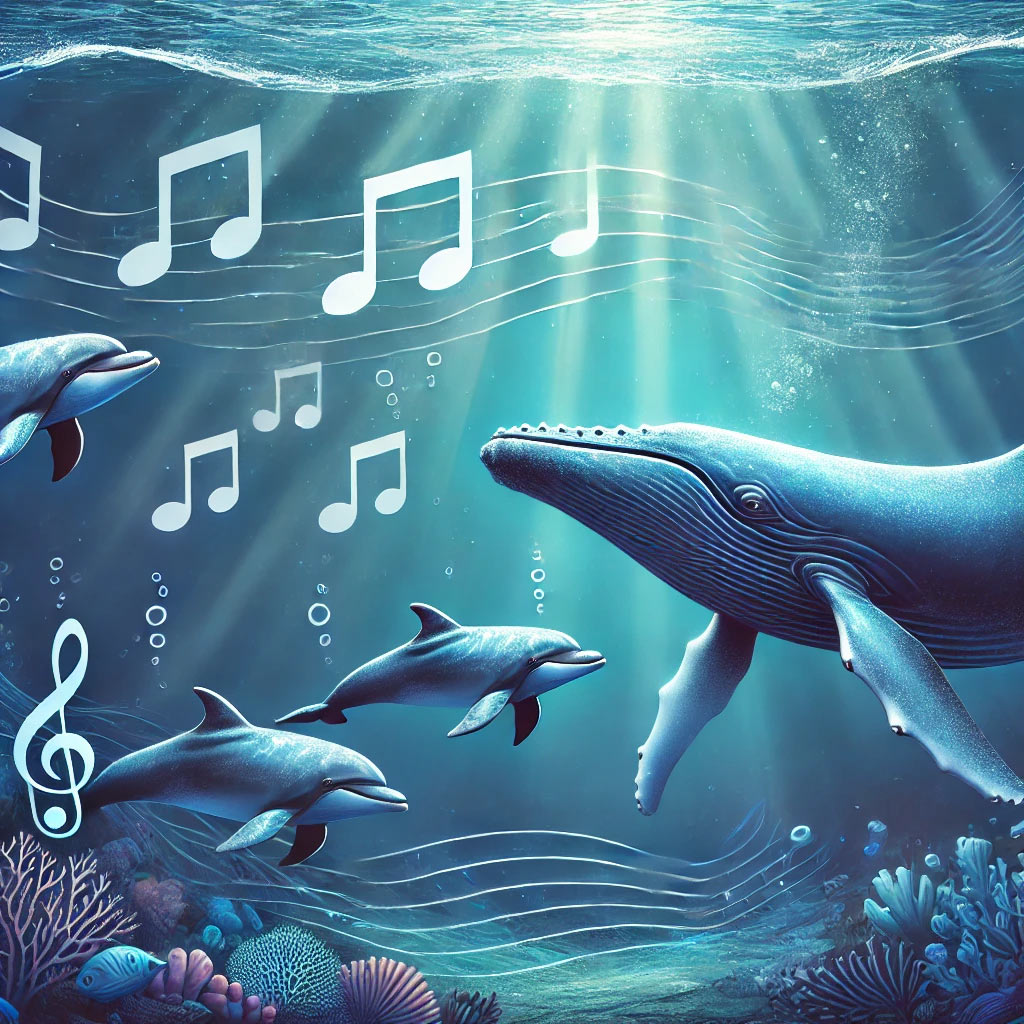The ocean isn’t silent. It’s buzzing with clicks, whistles, moans, and songs. Beneath the waves, marine mammals like dolphins and whales are having complex conversations. Some use music-like sounds, others use rapid-fire clicks. It’s not just noise—it’s communication. In this post, we’re breaking down how dolphins and whales “talk,” and whether they chat with other sea creatures, too.
Humpback Whales: The Ocean’s Solo Artists
Humpback whales are famous for their long, echoing songs. These aren’t random sounds—they follow patterns, almost like verses in a song. And interestingly, males are the ones doing most of the singing.
- Their songs can last up to 30 minutes
- They repeat the same song for hours
- Each population has its own unique “song culture”
Whales use these melodies mainly during mating season. Scientists think these songs help attract mates and maybe even mark territory. Over time, songs change slightly, like evolving playlists shared across pods.

Dolphins: The Fast-Talkers of the Sea
Dolphins are more like the chatty crowd in the ocean. Instead of long songs, they use rapid clicks, whistles, and squeals. These aren’t just for fun—they carry real meaning.
- Clicks are mostly used for echolocation—like sonar—to find food or navigate
- Whistles are for communication with other dolphins
- Signature whistles act like names, helping dolphins recognize each other
Dolphins can also change the tone and speed of their sounds to show emotion or urgency. They’re not just making noise—they’re expressing something.
Do Dolphins and Whales Understand Each Other?
Dolphins and whales share the same waters, and their sounds often overlap. So, do they talk to each other?
It’s not completely clear, but some signs suggest they do understand parts of each other’s vocal styles. For example:
- Bottlenose dolphins have been seen mimicking humpback whale calls
- Pilot whales and dolphins have been observed interacting and following each other in the wild
- Some mixed-species groups have been spotted cooperating during feeding
These clues hint that marine mammals might have a way to pick up on general cues or intentions, even if they don’t speak the exact same “language.”
Do Dolphins Communicate With Other Animals?
Dolphins don’t just talk to their own kind. They’ve been seen communicating with other species in a few interesting ways.
- With whales: Mimicking sounds, swimming together, and coordinating movement
- With humans: In captivity, dolphins can learn hand signals and even respond to vocal cues
- With fish: While not exactly talking, dolphins sometimes team up with other species during hunts—like working alongside seabirds to trap fish
While not as advanced as their dolphin-to-dolphin chats, these interactions show dolphins can recognize other animals’ patterns and respond in ways that suggest intentional communication.
The Bigger Picture: Sound Is Survival
For marine mammals, sound isn’t just how they talk. It’s how they survive. In the vast and often dark ocean, hearing is more important than sight.
- Echolocation helps them “see” with sound
- Songs and calls help them stay connected over long distances
- Communication helps them hunt, play, mate, and warn each other of danger
Human noise from ships, sonar, and drilling is starting to interfere with this sound-based world. That’s why scientists are pushing to better understand how whales and dolphins use sound—so we can protect the way they live and connect.
Nature’s Soundtrack Isn’t Silent
Dolphins clicking. Whales singing. Fish splashing. The ocean is alive with sound, and much of it carries meaning. From personal dolphin names to whale songs echoing for miles, it’s a reminder that communication isn’t just a human thing—it’s a part of life in every corner of the planet.
So next time you’re near the sea, remember: beneath the surface, a whole other conversation is happening.











